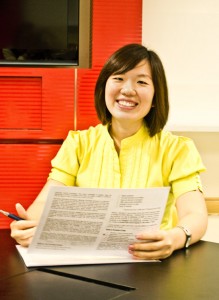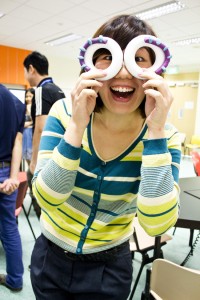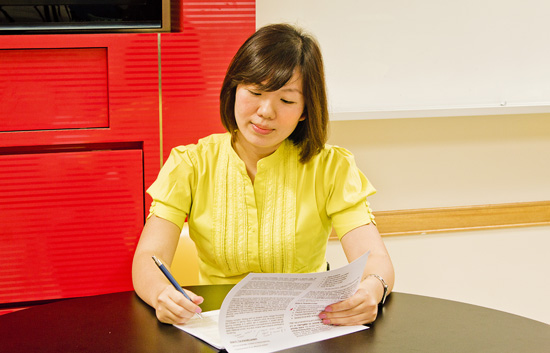Why Singapore’s English Teachers Should Embrace Singlish, Not Fight It
Is it time for Singaporean educators to embrace Singlish as a legitimate learning tool? What the Research […]
Read More
Playing roulette and getting drenched is all part of learning the concept of probability. And why not? It’s a great way to get students who struggle to understand Math to become interested in the subject.
“When I was studying, I could get my As but I didn’t like Math, didn’t understand Math,” Ms Cheryl Chen confesses.
 So when she was approached to implement a programme to help a group of at-risk students in Math, she readily took up the challenge.
So when she was approached to implement a programme to help a group of at-risk students in Math, she readily took up the challenge.
“I thought: Since I was in the same predicament as my students who aren’t performing in Math, maybe I can identify with them and address their issues better.”
A former Institute of Technical Education lecturer who is now a doctoral student at NIE, Cheryl decided that the best way to help these students is to let them learn creatively and playfully to minimize their aversion to Math.
Every week, she works with a Math teacher to teach eight Secondary 1 boys, as part of Jacob’s Ladder, a 2-hour after-school enrichment programme.
 Play – this was Cheryl’s strategy to keep her students interested.
Play – this was Cheryl’s strategy to keep her students interested.
“How can we make Math as a subject appealing?” Cheryl asks. “I used play as an additional tool in my teaching, as a possible form of pedagogy.”
During the first hour of the programme, students will do “Math-Math” with their Math teacher while Cheryl does “fun-Math” with them for the second hour. And for the fun-Math hour, she comes up with all kinds of creative games and ideas to engage her students in Math learning.
But there is a method to the playfulness in Cheryl’s class. Knowing that these students don’t “get” the logic of Math, she plays logical games that demonstrate the relevance of Math and reinforce their understanding of Math concepts.
An example was using Wet Head – an aqua roulette game – to teach students the concept of probability. This game involves the player wearing a helmet filled with water, with a roulette wheel attached to it. The player will spin the roulette, pull out one of its eight rods, and wait to see if they will get soaked.
“They thought more mathematically and said things like ‘50-50 chance, you sure kena!’ and they strategized using mathematical reasoning, logic and language,” Cheryl explains. “The students were not even aware they were doing Math and that is the beauty of play – learning spontaneously!”
Other games that students played with Cheryl include Dog and Bone and Mental Sums Hangman.
In addition to games, Cheryl also uses a situated learning approach in her lessons. Her personal favourite method involves the use of a dramatic context to frame a Math topic. “It evokes both emotions and the intellect, which is a hook for the learners,” she says.
“What I am doing here is to make it slightly easier for pupils who might be struggling with Math because we don’t see the point of it,” Cheryl shares, as she recalls how frustrating it was for her to learn Math in school.
She feels that bringing her students into a context where Math is logical and useful is crucial to their understanding and appreciation of the subject.
“We are very purpose-driven people. We need to know the why and the how.”
 Being a Math sceptic herself, Cheryl never truly understood the logic of having to find the x in an algebraic equation. So she feels that bringing her students into a context where Math is logical is fundamental to their understanding.
Being a Math sceptic herself, Cheryl never truly understood the logic of having to find the x in an algebraic equation. So she feels that bringing her students into a context where Math is logical is fundamental to their understanding.
However, she cautions against crafting problem sums that are not realistic. For example, do people talk about cookies divided into quarters in real life ? Do farmers count the number of legs to find out the total number of cows and chickens they have?
While some students find it easy to grasp the concepts behind such questions, Cheryl’s students struggle to connect the dots because the questions do not seem to make sense or have any relevance to the real world.
And without early intervention in Math, this group of at-risk students may lose interest in Math and may even drop out of school eventually. This is why Cheryl hopes her programme can help to change her students’ perception of Math and realize that, yes, Math can actually be fun!